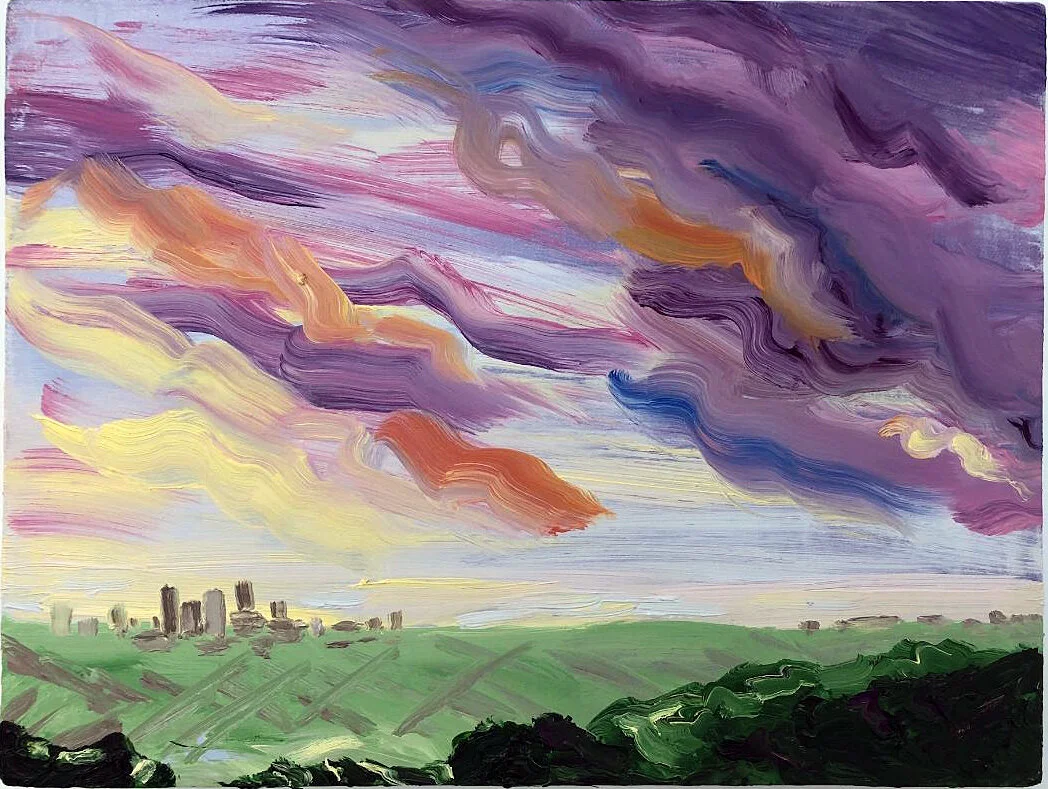THE FOOL’S JOURNEY | QUARANTA | SPRING MAPS | THE LOS ANGELES SERIES | LOST PATTERNS | MERCURY | UNTITLED SERIES | LANDSCAPES | FLOWERS, ALWAYS
The duality of life in Los Angeles is depicted in the painting series “Los Angeles: A Different Narrative”. The paintings show a collection of private and public views, both beautiful and destructive, that make up the urban landscape crisscrossing Los Angeles.
Joan Didion summed up life in Los Angeles “the unpredictability of the Santa Ana winds affect the entire quality of life in Los Angeles, accentuate its impermanence, its unreliability. The wind shows us how close to the edge we are.” These paintings show our fragility and our resilience.
— Susan Lizotte
Please contact us if you’d like to view the complete collection.
The Los Angeles Series
Shana Nys Dambrot, Los Angeles, 2019
Reality in Los Angeles is weird enough already, before an artist even has a chance to intervene. In L.A. what might be most people’s idea of zany is our baseline normal. This goes for the residents and the landscape, the architecture and the cars, the natural light and the preternatural climate. For a painter like Susan Lizotte, it’s irresistible. She loves L.A. in only the way a prodigal transplant can. Born here but raised elsewhere into her teens, Lizotte’s return was infused with a heightened sense of attentiveness and preceded by both private and cultural fantasies. Her eyes grew wide as she took it in, and they’ve stayed that way.
Previous painting series have dealt with more codified themes, from war and disease in medieval history to personal family emblems and secrets. Through it all, Lizotte has developed a kind of post-folk visual vocabulary in which gestural impasto is tethered to flawless grounds, anatomy and geometry are rendered as malleable, and color is in no way subservient to form. In her newest works, she deploys the cargo of her heavy brushes not in pursuit of dreams and myths, but rather to an embrace of the world around her -- which as mentioned above, was plenty strange enough as she found it.
For her landscapes and architectural elements, she culls from an expansive collection of views and vignettes across the richly variable and frequently surreal sights of the city. L.A. is a major urban territory, but with no single center; between its several hubs lie stretches of unpredictable semi-urban eccentricity and majestic incursions of nature. From the mountains to the ocean, canyons to canals, random gardens, bedraggled landmarks, beacons of tourism, redevelopment zones, and inexplicable blight. “When the wildfires are burning,” says Lizotte, “there are usually exquisite sunsets. Sometimes the horrifying experience can yield the sublime.”
Her rather epic paintings of both the Griffith Observatory and LACMA on fire refers to the precariousness of life in our geography. But like her fire-threatened Hollywood sign, it’s also riffing on a proper art historical meme, with Ed Ruscha, David LaChapelle, and Carlos Almaraz all playing with the idea of natural disaster and urban landmarks. A companion to the LACMA painting, Lizotte has created a portrait-like diptych of a single lamp-post from “Urban Light” as it sags. Melted like a great dropping flower, or curling upon itself, serpentine, a witness to the flames, is it too much to say that lamp-post is us, an avatar of humanity present in the landscape? Like the endless selfies taken at “Urban Light,” the scenes in Lizotte’s compositions capture personal experiences unfolding in shared spaces. After all, in Los Angeles, every experience is always both private and public.
From her regal estate-style painting of the Griffith Observatory crowned in flames, to a hedged-in sculpture garden with statuesque works that stand strange and strident like the “Demoiselles d’Avignon,” to the pastoral bus stop on Sunset and Rodeo, that gleams like an Impressionist cottage, Lizotte’s inspiration for the new works may be the real world, but her style remains assertively painterly. For her, illusion and realism are not only beside the point, but somewhat suspect, and anyway unnecessary for imparting a viscerally true sense of this place. Her topographical pigments and flickering, ragged edges -- that’s Los Angeles. As Lizotte sensed from afar and then proved up close, this beautiful city is mostly made of ragged edges. The thing is, she likes it that way, and she builds her paintings of it accordingly.












